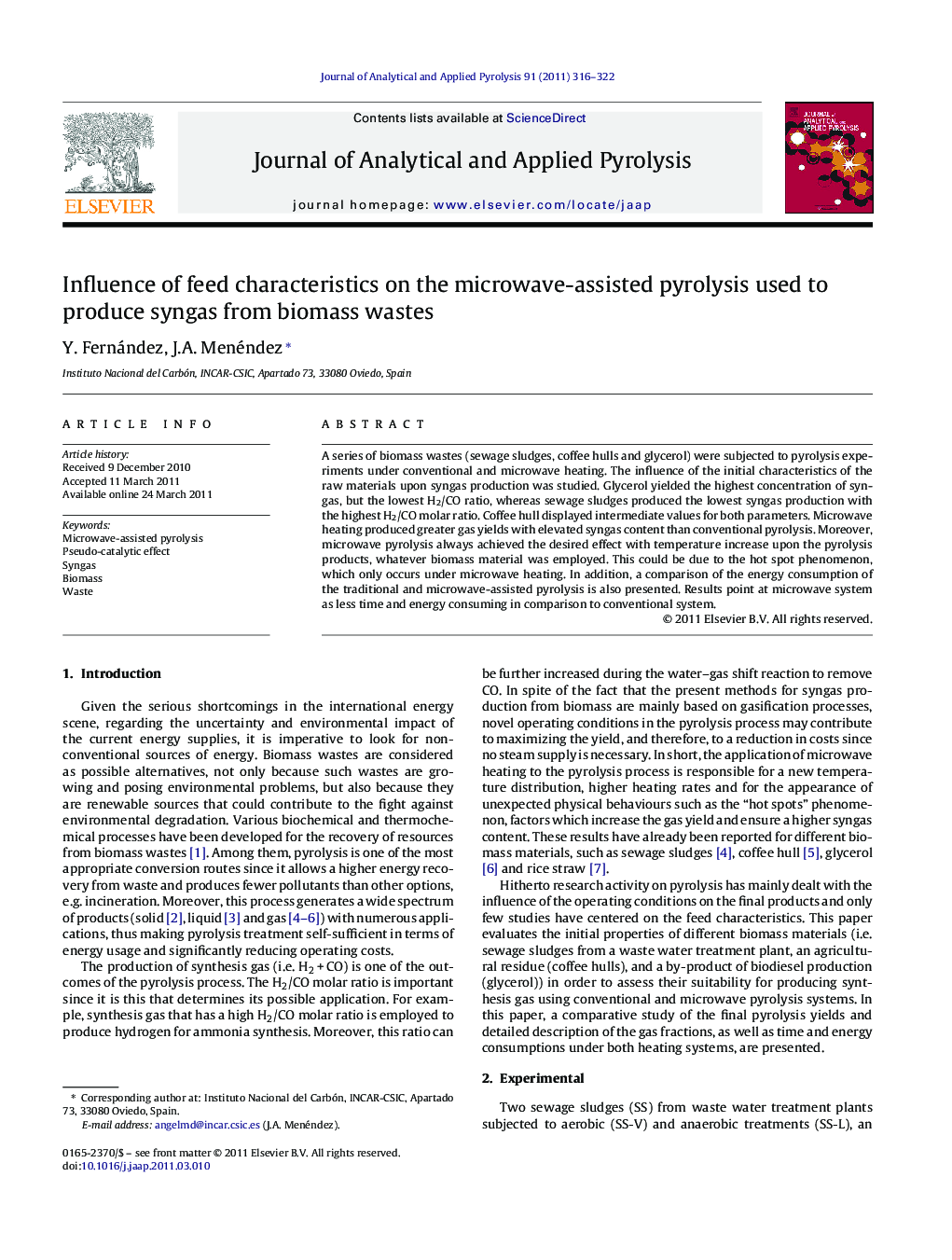| Article ID | Journal | Published Year | Pages | File Type |
|---|---|---|---|---|
| 1196948 | Journal of Analytical and Applied Pyrolysis | 2011 | 7 Pages |
A series of biomass wastes (sewage sludges, coffee hulls and glycerol) were subjected to pyrolysis experiments under conventional and microwave heating. The influence of the initial characteristics of the raw materials upon syngas production was studied. Glycerol yielded the highest concentration of syngas, but the lowest H2/CO ratio, whereas sewage sludges produced the lowest syngas production with the highest H2/CO molar ratio. Coffee hull displayed intermediate values for both parameters. Microwave heating produced greater gas yields with elevated syngas content than conventional pyrolysis. Moreover, microwave pyrolysis always achieved the desired effect with temperature increase upon the pyrolysis products, whatever biomass material was employed. This could be due to the hot spot phenomenon, which only occurs under microwave heating. In addition, a comparison of the energy consumption of the traditional and microwave-assisted pyrolysis is also presented. Results point at microwave system as less time and energy consuming in comparison to conventional system.
